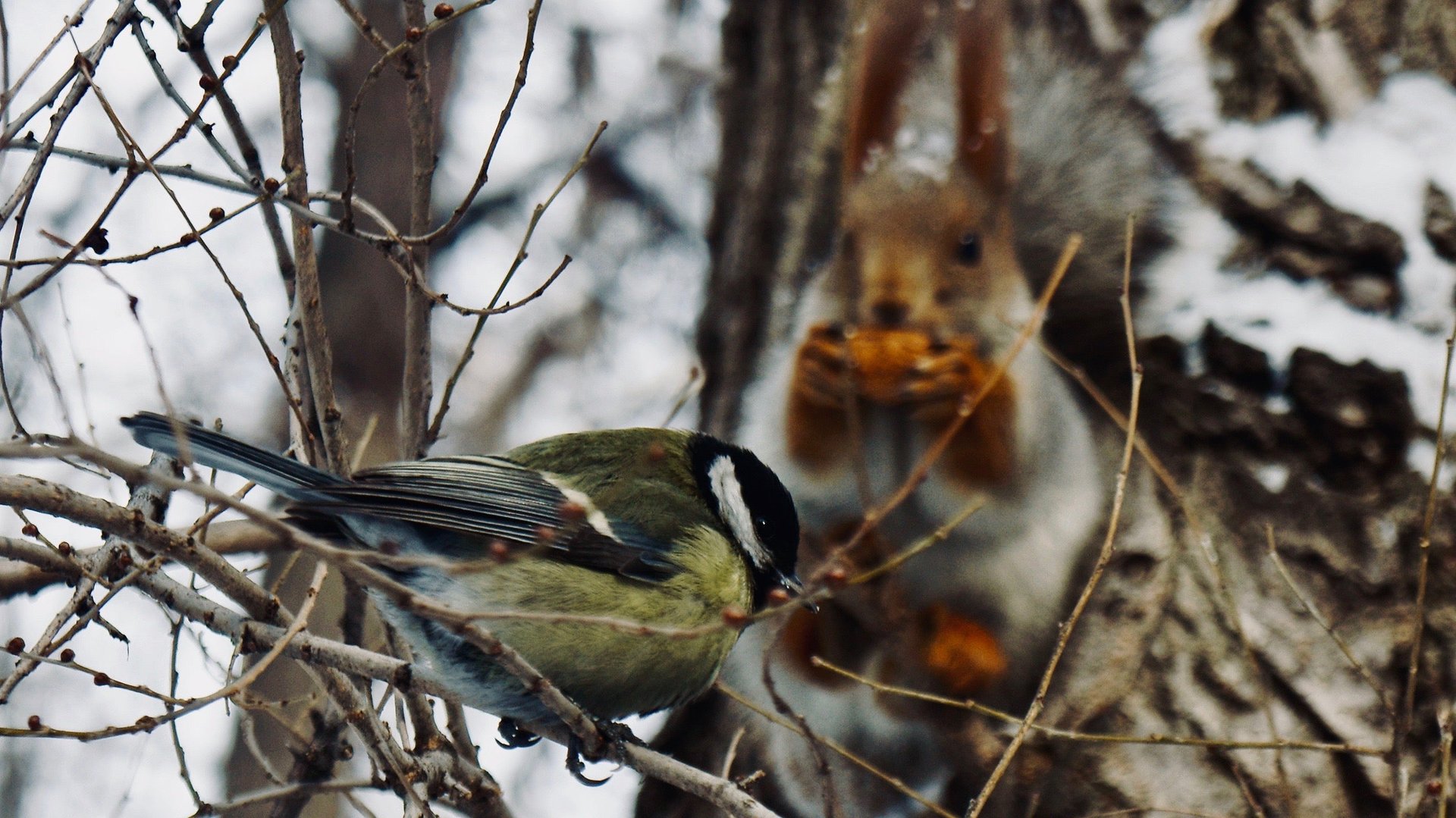Squirrels rely on the original twitter to know they are safe
Long before humans adopted social media and a 24-hour news cycle, some creatures were already tuning in to tweets.


Long before humans adopted social media and a 24-hour news cycle, some creatures were already tuning in to tweets.
A new study in the journal Plos One, by researchers from Oberlin University in Ohio, tested the hypothesis that birds act as community informants, essentially publicizing news from moment to moment. They found that gray squirrels adjust their vigilance levels in relation to the sounds around them, including the chatter of birds.
In other words, when birds call, squirrels listen, and when the avians simply chitchat, the rodents know that they are safe.
To reach this conclusion, a behavioral ecology student, Marie Lilly, created various recordings and took to the streets with buckets full of equipment to collect data about the effects of these tweets on foraging gray squirrels. Lilly hid behind trees as she played five sets of sounds for the squirrels. To indicate danger, she played the call of a red-tail hawk and to indicate safety, she played either ambient sound or one of three different recordings of chattering birds. Then, using a specially created app, she noted the squirrels’ behaviors, logging how much time a squirrel spent freezing, foraging, fleeing, resting, standing, or looking skyward.
While she was collecting the data, Lilly told NPR, she couldn’t necessarily make sense of the squirrels’ behavior. “In the field, I couldn’t tell if their vigilance level was going down or not because I was just recording their raw behavior,” she explains.
However, when she analyzed the collected data after 67 experiments—30 with tweeting bird sounds and 37 with ambient noise—a pattern emerged. Lilly found that the squirrels became more vigilant after hearing the cry of the red-tail hawk—freezing, fleeing, or looking up. But when she played the sound of birds chitchatting—no matter which of the three recordings—the squirrels quickly resumed regular activities, foraging busily, apparently reassured that danger had passed, based on the exchanging birds. The squirrels responded more rapidly to calm birdsong than they did to ambient noise, indicating that they rely more heavily on the inadvertent informants to assess the dangers they face than they do on the mere absence of threatening sounds.
In the paper published with Oberlin professor Keith Tarvin, Lilly and her fellow researchers argue that the findings indicate animals aren’t just relying on vocal species to convey information about danger but are also listening closely for indications of safety. They note that as noise pollution levels rise—which also poses a threat to human health—creatures like squirrels that rely on news reports from other species will increasingly be threatened because they’ll miss these important tweets.